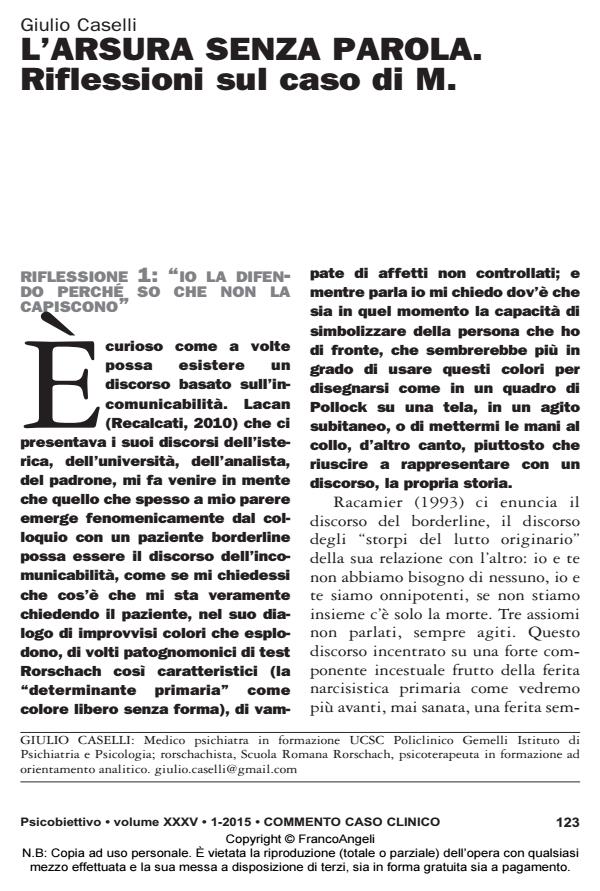A scorching heat without words. Reflections about the case of M.
Journal title PSICOBIETTIVO
Author/s Giulio Caselli
Publishing Year 2015 Issue 2015/1
Language Italian Pages 5 P. 123-127 File size 86 KB
DOI 10.3280/PSOB2015-001008
DOI is like a bar code for intellectual property: to have more infomation
click here
Below, you can see the article first page
If you want to buy this article in PDF format, you can do it, following the instructions to buy download credits

FrancoAngeli is member of Publishers International Linking Association, Inc (PILA), a not-for-profit association which run the CrossRef service enabling links to and from online scholarly content.
Starting from the words of the patient, the author has tried to develop a reflection on the hypothesis proposed in psychoanalytic perspectives to understand and conduct psychotherapy with patients who have Borderline Syndrome. The author has focused on key concepts such as the concept of limit, symbolic order, imaginary. The analytical reflections are related to the orientations of the freudian, lacanian and jungian schools. According to the author, the key concept of this paper on the borderline pathology is the creation of a specific image that can support patients to build a sort of levee. Therefore, the main work of the therapeutic relationship is the creation of an image watershed that could contain the flow of the river of raw contents and unprocessed affects potentially at risk of flooding as it classically occurs in this type of disorder. The therapeutic relationship has to deal with the canalization of this river of undifferentiated emotions.
Keywords: Borderline; Symbolic Order; Psychoanalysis; Splitting; Object Relations; Archetypal Psychology
Giulio Caselli, L’arsura senza parola. Riflessioni sul caso di M. in "PSICOBIETTIVO" 1/2015, pp 123-127, DOI: 10.3280/PSOB2015-001008